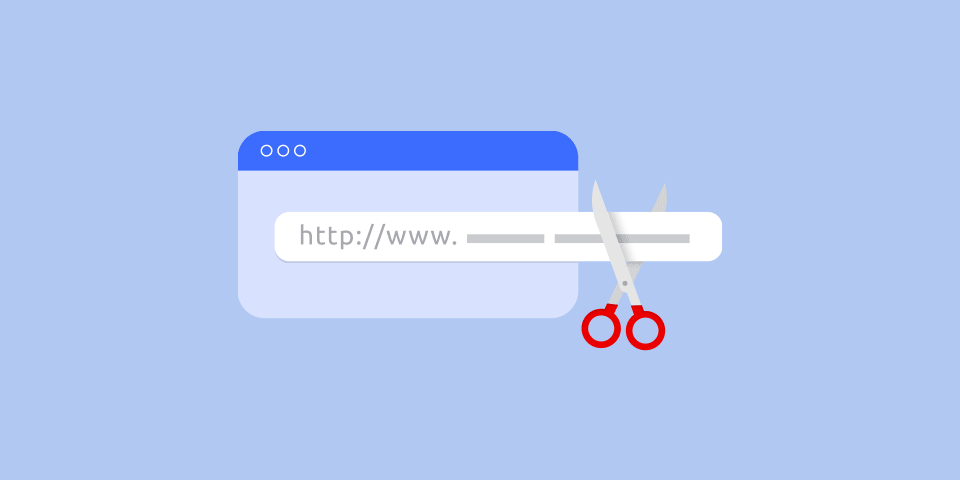Tiny Links, Big Impact: How URL Shortening Took Off-and Why Cuttly Is the Next Evolution
Long, unwieldy links used to break emails, overflow print ads, and eat precious characters on social media. Today those same URLs can be shrunk into sleek, branded gateways that track every click and even power dynamic QR codes. In this article we trace the rise of URL shortening-from the early days of TinyURL to the social-media boom-and show how Cuttly turns a simple redirect into a full-featured marketing engine with branded domains, link-in-bio pages, rich analytics, and more.

From unwieldy blue monsters to bite-size URLs
In the dial-up era of the late 1990s, a single hyperlink could sprawl across three lines of text. Early forums, email clients, and even printers mangled those wraps, leaving users to piece links back together by hand. Kevin Gilbertson’s TinyURL (2002) offered a clever shortcut: one compact redirect that pointed to the original labyrinthine address. Suddenly attachments, signatures, and message boards looked cleaner-and links actually worked.
A few years later came Twitter’s 140-character limit (2006). Posting a news headline plus a full URL was impossible without trimming something. Bitly, Is.gd, Ow.ly, and others rushed in to supply microscopic links that left room for commentary. Marketers discovered another bonus: those services counted clicks. Overnight, “link shortening” evolved from a convenience hack into a stealth analytics tool.
Why short links became marketing essentials
Space-saving - Fits on packaging, slide decks, tweets, SMS.
Readability & trust - A neat slug like yourbrnd.link/sale looks safer than example.com/index.php?utm_source=….
Analytics - Click counts reveal which posts, channels, or countries convert best.
Branding - Custom domains turn every link into a micro billboard.
Flexibility - Change the destination without breaking the printed link or QR code.
Creative Control: Branded QR Codes in Cuttly
Generate your short link. Paste the long URL, choose your custom domain (yourbrnd.link) and a memorable slug.
Customise the QR. Pick brand colours, add a logo in the center, round the corners-Cuttly’s designer makes codes blend with any visual identity.
Download hi-res files. SVG or PNG, ready for printers, label makers or laser engravers.
Little wonder that by the mid-2010s, every campaign brief included “shorten the links.”
Enter Cuttly: a Swiss Army knife, not just a URL guillotine
Most shorteners still offer little more than cut-and-count. Cuttly pushes far past that baseline:
- Granular, real-time stats – Map views, device types, browsers, top referrers. Perfect for AB-testing two flyers or tracking city-specific posters.
- Branded domains & custom slugs – Claim a memorable handle such as yourbrnd.link and keep your identity front and center.
- Dynamic QR Code designer – Style codes with brand colors, logos, or rounded corners, then swap the target page without reprinting a single label.
- Link-in-bio builder – Collect all your short links on a mobile-first micro-site; ideal for Instagram, TikTok, or any “one-link-only” profile.
- Polls & forms – Embed a mini survey behind a short link and watch responses roll into the same dashboard.
- Security filters – Automatic spam and phishing checks keep shady redirects at bay, safeguarding both brand and users.
Want to see Cuttly’s branded-link magic in action? Read our guide on turning short URLs into a branding asset.
The offline renaissance: QR Codes meet short links
Today's world has normalized scan-to-scan menus, tickets, and invoices. But a static QR code is only as fresh as the URL behind it. With Cuttly, you can:
- Swap today’s lunch menu for tomorrow’s brunch list.
- Update a shipping QR from track-your-parcel to a review-us page after delivery.
- Run separate codes for each store location and compare foot-traffic conversions on the same dashboard.
Short links and QR codes have become twin engines-one hides inside the other, both fully trackable and endlessly updatable.
Where the road leads next
Voice assistants read out URLs. Smart TVs flash codes. Print magazines embed NFC. Every channel still needs one reliable rule: make the jump from offline or on-screen prompt to web page effortless-then measure it. URL shortener started as a workaround for clunky tech; they’ve matured into data pipelines that connect physical and digital worlds.
Cuttly’s roadmap doubles down on that vision: deeper attribution (UTM), richer API features etc. The question is no longer “Why shorten a link?” but “How much insight do you want when you do?”
Key takeaways
- Origins – Long URLs and character limits birthed the first shorteners.
- Adoption drivers – Space, aesthetics, analytics, and brand control made them mainstream.
- Cuttly’s edge – Beyond trimming: click stats, branded domains, dynamic QR, link-in-bio, polls, security.
- Future-proofing – One short link + one QR code can evolve endlessly without reprinting or reposting.
Ready to upgrade from “just shorter” to smarter? Create your first branded link and watch every click-online or offline-tell a richer story.
URL Shortener
Cuttly simplifies link management by offering a user-friendly URL shortener that includes branded short links. Boost your brand’s growth with short, memorable, and engaging links, while seamlessly managing and tracking your links using Cuttly's versatile platform. Generate branded short links, create customizable QR codes, build link-in-bio pages, and run interactive surveys—all in one place.



